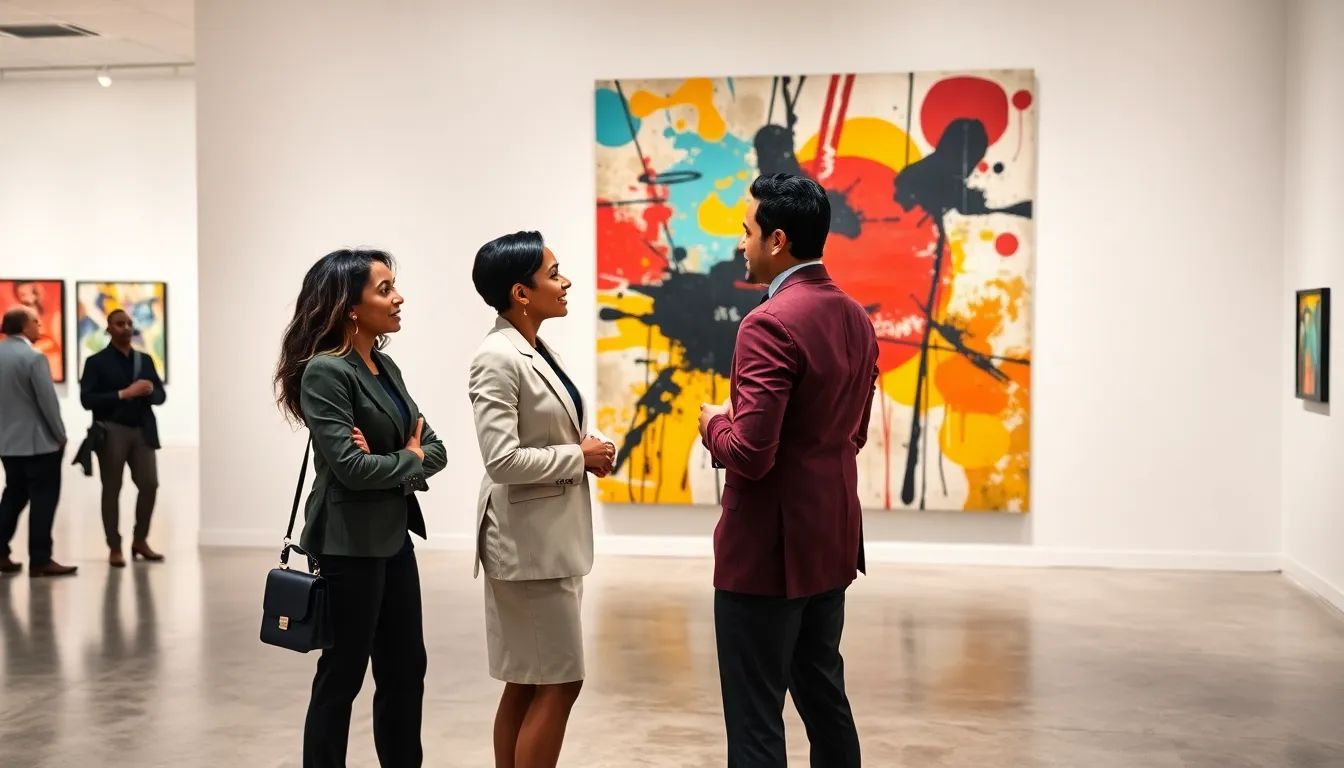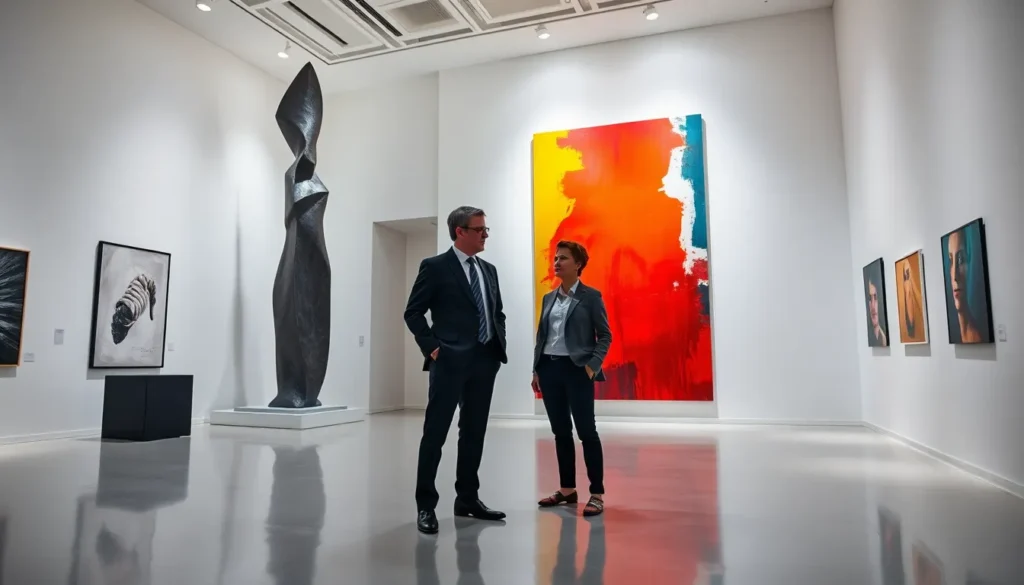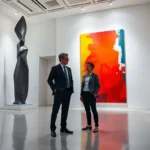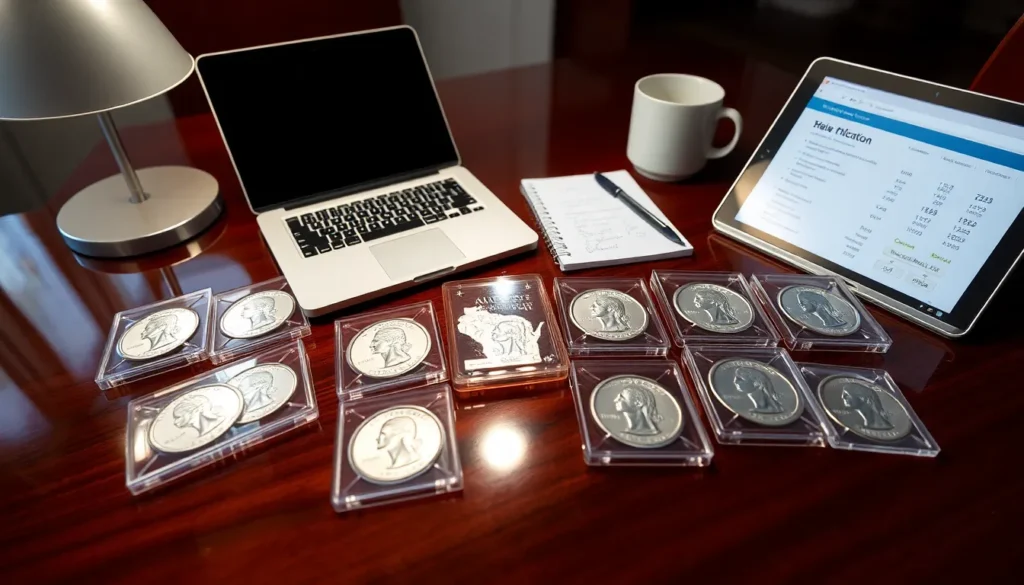Picture this: a towering sculpture sparkling in the gallery lights, a two-million-dollar canvas splashed with colors no one can identify, and whispers of money hidden in plain sight. This is not just modern art: it’s an intricate dance of creativity and corruption. While some consider modern art a means of expression, others see it as an opportunity for financial mischief. Let’s jump into this intriguing realm where aesthetic meets illicit finances, revealing how galleries have become unlikely battlegrounds for money laundering schemes.
Understanding Modern Art and Its Appeal

Modern art often baffles the observer, inviting curiosity and controversy alike. Artists like Jackson Pollock and Andy Warhol redefined what art could be, transforming simple canvases into complex concepts. This genre dares to challenge traditional notions of beauty and value, attracting collectors and investors intent on making a statement. With its emotional depth and avant-garde styles, it doesn’t just capture the eye, it captivates the wallet.
But what makes modern art so appealing? From its bold colors to conceptual messages, each piece tells a story. Buyers often feel a connection to the artist’s intent, adding layers of personal meaning. This emotional resonance drives prices upward, creating a fertile ground for both appreciation and exploitation.
The Intersection of Art and Finance
Art has long been viewed as an investment, with many buyers treating pieces like stocks or bonds. In many ways, the art market offers a unique allure: it’s less regulated than traditional financial sectors, yet it possesses substantial value. Individuals and institutions alike see the potential for profit, particularly in modern art.
Financialization of art has led to an increase in auctions and private sales that elude public scrutiny. This lack of oversight makes it an appealing choice for those looking to obscure the source of their wealth. Interestingly, collectors are often willing to invest significant sums based on perceived market value rather than intrinsic worth, further complicating the landscape.
Key Mechanisms of Money Laundering in the Art World
So, how does one launder money through art? The methods are myriad and, at times, surprisingly clever. One common mechanism involves overpricing works during a sale. A buyer purchases a painting for $1 million, only to sell it later for $2 million without any real increase in value. The additional cash becomes illicitly-derived profit that appears legitimate.
Similarly, the use of shell companies can obscure the true owner of a piece, making it challenging for authorities to track its lineage. Typically, these entities buy and sell art through a complex web that complicates financial audits. Besides, cash transactions often occur at galleries or art fairs, allowing for anonymity.
Art fairs and auctions can also serve as prime platforms to help money laundering. These environments encourage quick transactions that often lack documentation. The confluence of anonymity and high value makes the art world ripe for exploitation.
High-Profile Cases of Art-Related Money Laundering
Numerous high-profile cases highlight the dubious connections between art and money laundering. Take the infamous case involving the paintings of Jean-Michel Basquiat. Allegations arose that some of his works were used to launder large sums of money, with obscure sales driving up prices far beyond their fair market value.
Another striking example is the auction house scandals that led to investigations by law enforcement agencies. During these incidents, multiple pieces sold for astonishing amounts without sufficient documentation, raising red flags. The collapse of some auction houses due to these revelations casts a long shadow over the entire industry.
These cases illustrate a concerning trend: a lack of accountability can result in major financial malfeasance. Investigations often reveal that collectors and dealers understand the system and exploit it to their advantage.
Legal and Regulatory Responses
As the art market becomes increasingly scrutinized, governments worldwide are enacting regulations aimed at curbing money laundering. The Financial Action Task Force (FATF) and other institutions have put forth guidelines directing countries to classify art dealers as reporting entities. This change requires galleries and auction houses to adhere to anti-money laundering (AML) laws, significantly altering how transactions are recorded.
Regulatory frameworks push for transparency in art sales, yet implementation remains inconsistent. Some regions see robust compliance while others lag behind, leading to ongoing criticism. Advocates argue that without universal standards, the potential for laundering will persist. The art world is at a crossroads: adapting to these rules could either enhance legitimacy or stifle creativity.
Impact on the Art Market and Society
The implications of art-related money laundering extend far beyond individual investors. A significant impact on the market itself raises concerns about artistic integrity and value. Works bought and sold under suspicious circumstances can depreciate, impacting legitimate collectors and artists alike. Also, this atmosphere breeds distrust among stakeholders in the art world.
From a societal perspective, when art serves as a front for laundering, it compromises cultural dialogue. Local galleries and independent artists feel the consequences as their work struggles for credibility. The fallout of financial misconduct damages the very foundation of authenticity on which art is built, leading to critical questions about what constitutes value in this complex landscape.













